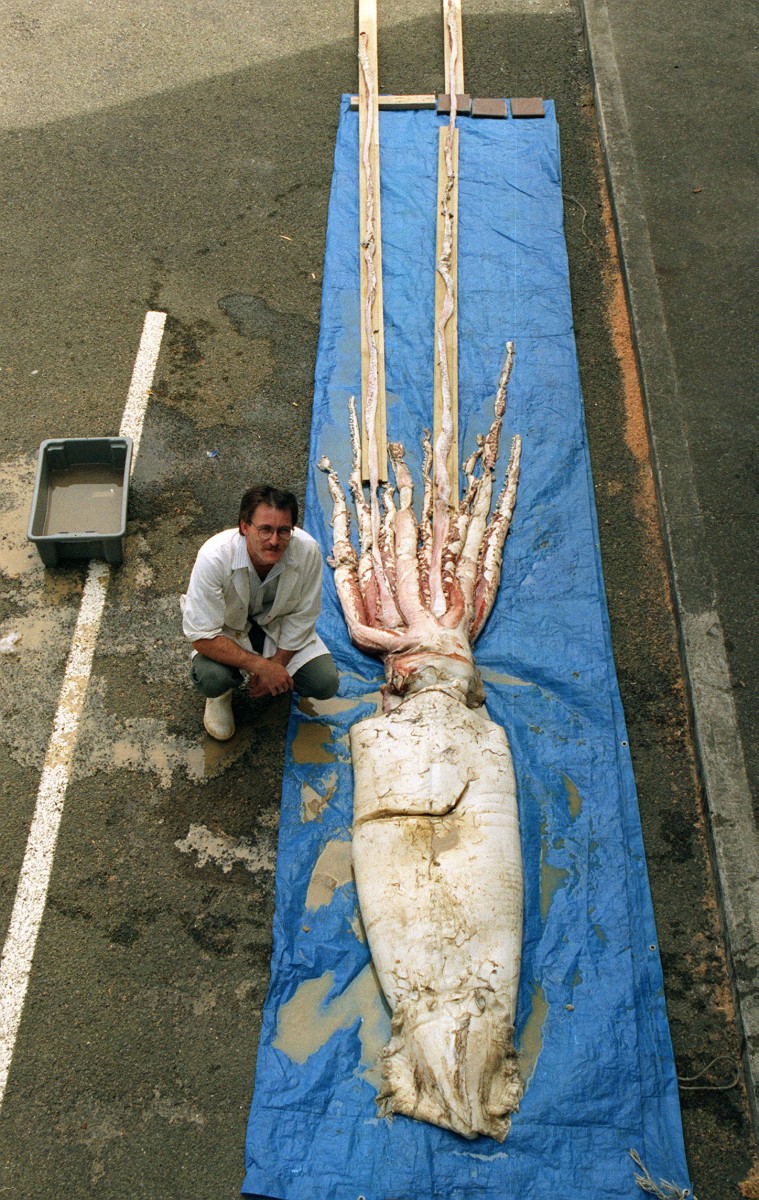The 10-inch eyes of giant squid may enable them to detect sperm whales from afar in the deep dark waters they inhabit.
Giant squid and colossal squid, Architeuthis and Mesonychoteuthis, have the biggest eyes in the animal kingdom with diameters nearly three times greater than those of any other animal, similar in size to soccer balls. In comparison, large whales’ eyes are about one-third the size at about 3.5 inches wide.
An international team of researchers created a mathematical model of underwater vision to determine how far aquatic animals can see. Based on their calculations, the ideal size for underwater life is not much bigger than an orange.
“For seeing in dim light, a large eye is better than a small eye, simply because it picks up more light,” said research leader Dan-Eric Nilsson at Sweden’s Lund University in a press release.
“But for animals that live in the sea or in lakes, the optical properties of water will severely restrict how far away things can be seen.”
The scientists tested the abilities of giant squid eyes in a variety of tasks and light conditions. They found that huge eyes only have the advantage over smaller ones when detecting very large objects like a whale.
Similarly, ichthyosaurs also had very large eyes, perhaps to avoid giant pliosaurs, both extinct giant marine reptiles that inhabited the oceans during the Mesozoic era, long before whales existed.
But how do giant squid actually see their predators more than 120 meters (131 yards) away in the murky depths where they live?
“The answer is bioluminescence—light produced by small gelatinous animals when they are disturbed by the whale moving through the water,” Nilsson explained.
“It is well known that bioluminescence can reveal submarines at night, and diving sperm whales will become visible for the same reason.”
The findings were published online in Current Biology on March 15.
[video]https://www.youtube.com/watch?v=_z2Lfxpi710[/video]An animation of a sperm whale hunting a giant squid. Credit: Museum of New Zealand Te Papa Tongarewa







